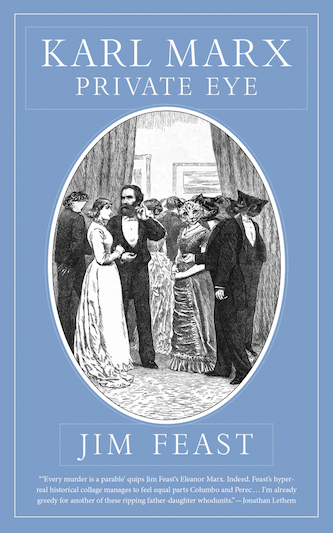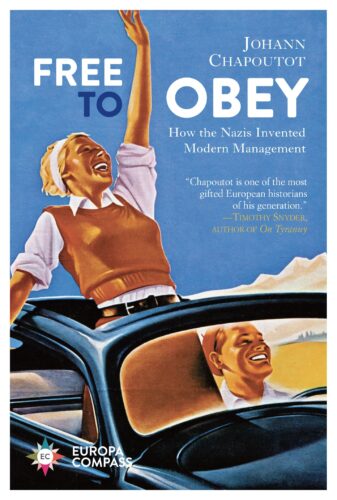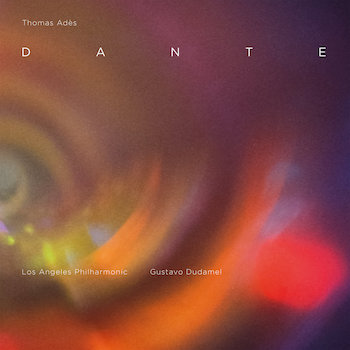June Short Fuses — Materia Critica
Each month, our arts critics — music, book, theater, dance, television, film, and visual arts — fire off a few brief reviews.
Jazz
Tenor saxophonist Don Braden is the right man to hit the mark with a project like this — he makes the improbable seem inevitable.
 Don Braden has long been a fine journeyman tenor saxophonist, arranger, and composer. His latest album is Earth Wind and Wonder Volume 2 (Creative Perspective Music), a follow-up to 2018’s Earth Wind and Wonder. Braden is the right man to hit the mark with a project like this, which is to make the improbable seem inevitable. He makes a highly persuasive case for these Earth Wind & Fire and Stevie Wonder compositions as jazz: there’s the appeal of the catchy melodies, plus the challenge of multiple sections, key changes, and alternating rhythms.
Don Braden has long been a fine journeyman tenor saxophonist, arranger, and composer. His latest album is Earth Wind and Wonder Volume 2 (Creative Perspective Music), a follow-up to 2018’s Earth Wind and Wonder. Braden is the right man to hit the mark with a project like this, which is to make the improbable seem inevitable. He makes a highly persuasive case for these Earth Wind & Fire and Stevie Wonder compositions as jazz: there’s the appeal of the catchy melodies, plus the challenge of multiple sections, key changes, and alternating rhythms.
You gain a new appreciation of the complexity of the originals. EW&F’s “In the Stone” alternates between samba and swing, and the quartet locates the drama in the different sections of the piece. “That’s the Way of the World” is an up-tempo swinger, and it should be placed onto more jazz set lists pronto. In this context, the main melody is revealed to be short riffs with some hip blue notes — perfect for a jazz blowing vehicle. EW&F’s “Reasons” has beautiful harmonies, and pianist Miki Hayama discovers even more beneath the surface.
Wonder’s “Master Blaster” starts out sounding like it’s going to be “A Love Supreme,” which is more than a bit incongruous, but it works. Wonders “Bird of Beauty” features Braden on flute. There’s an excellent piano solo from Hayama that kicks up the energy level, and Braden follows through at the conclusion. This is clearly a band playing together in the studio.
I braced myself for Wonder’s “Send One Your Love,” expecting Smooth Jazz at best and schmaltz at worst, but it turns out to be a standout track. Braden makes it sound like something Wayne Shorter would write. Slowed down with a jazz feel and digging into the darker side of the harmonies, it’s moving without being cloying.
Only a few tracks dip into conventionality. “Creepin’” is a lovely and seductive composition, but the chimes and synth strings take it straight to Quiet Stormville. Synth strings appear subtly here and there, unobtrusive but also unnecessary.
Braden is out there gigging, so catch him if you can. His EW&F and Wonder covers are going to make for a fun and swinging show.
— Allen Michie
Robotics
Is there such a thing as benign artificial intelligence?

Boston Dynamics’ Spot — see him run.
In recent months, Artificial Intelligence (AI) and Robotics have been deemed by journalists and other critics as demonic forces that will endanger the future of humanity. And there are reasons to fear these nightmare scenarios: dangers include the spread of misinformation, AI-fueled warfare, privacy violations, and automation replacing humans. Many outspoken artists, writers, designers, and tech-savvy entrepreneurs argue that this technology is already impacting, for the worse, creativity, truthfulness, and respect for human life. The public is also skeptical: a recent Quinnipiac University poll reported that a majority of Americans (54%) believe that AI could be disastrous for humanity.
But, while this essential debate rages, attention should be paid to the other side. A Boston-area corporation, Boston Dynamics, is demonstrating how these technologies can be potentially life-changing, a force for good rather than evil.
Founded 35 years ago by electrical engineer Marc Raibert, Boston Dynamics is a Waltham-based progeny of MIT that is now a subsidiary of South Korea’s Hyundai Motor Company. One of the world leaders in the field of Robotics, BD says that its “mission is to imagine and create exceptional robots that enrich people’s lives. “The company’s gifted engineers (electrical, mechanical, robotic, etc.), industrial designers, and computer wizards focus their efforts on creating machines that can move with the flexibility, dexterity, and agility of people and animals. These products are designed to be the next evolutionary step in machinery, used to reduce physical danger and tedious repetition, to ease the physical demands of everyday work. The designs reflect BD’s dedication to functionality and elegance.
The company’s two- and four-legged automatons have not been fashioned to be prowling Terminators. (Though one assumes that the military could potentially look at them that way.) These dynamic machines are intended to be helpful assistants. The very humanoid “Atlas” demonstrates how an advanced control system and state-of-the-art hardware can give robots a sense of balance that rivals human-level agility and dexterity. The dog-like “Spot” is an agile mobile robot that navigates terrain with unprecedented flexibility: it can handle routine inspection tasks safely, frequently, and accurately. “Stretch” is a tireless robot dedicated to automated boxes, containers and cartons handling for more efficient warehouse operations. With its tongue-firmly-in-cheek, Boston Dynamics refers to its version of AI as “Athletic Intelligence.
The classic reader Dick and Jane gave us “Run, Spot, run. See Spot run.” Boston Dynamics has come up with the refrain “Dance, Spot, dance.”
— Mark Favermann
Books
This is an amusing whodunit, but there isn’t nearly enough of Karl Marx, radical gumshoe, in action.
 Karl Marx Private Eye is not my first go round with Marxism and murder. Decades ago I saw a play in Boston by the late Maxine Klein, an Obie Award-winning director known for her strident political theater. The production was entitled The Mysterious Death of Capi T. List, and it was an exercise in what might be described as detective dialectics. Jim Feast’s amusing whodunit is far less heavy-handed, though the central action, set in the late 19th century at a spa in Karlsbad, Bohemia, where Karl and his 18-year-old daughter Eleanor are vacationing under the name of “Arbuthnot,” taps into class warfare via acts of revenge that center on the murders of a Serbian revolutionary and a rude and greedy American millionaire. Who killed whom and why are the central questions, and around this bloody skullduggery Feast has applied plenty of convincing period detail, from the description of clothing to a step-by-step look at water therapeutics. As for plot, there’s a possible MacGuffin of a valuable folio of Shakespeare that is up for grabs, various affairs and irrational jealousies, an animal/bird themed costume party, lots of underclass feminist spin, and a discussion of whether it is possible for the dialect of history to go in reverse. Marx is not convinced, but it looks like it very well might.
Karl Marx Private Eye is not my first go round with Marxism and murder. Decades ago I saw a play in Boston by the late Maxine Klein, an Obie Award-winning director known for her strident political theater. The production was entitled The Mysterious Death of Capi T. List, and it was an exercise in what might be described as detective dialectics. Jim Feast’s amusing whodunit is far less heavy-handed, though the central action, set in the late 19th century at a spa in Karlsbad, Bohemia, where Karl and his 18-year-old daughter Eleanor are vacationing under the name of “Arbuthnot,” taps into class warfare via acts of revenge that center on the murders of a Serbian revolutionary and a rude and greedy American millionaire. Who killed whom and why are the central questions, and around this bloody skullduggery Feast has applied plenty of convincing period detail, from the description of clothing to a step-by-step look at water therapeutics. As for plot, there’s a possible MacGuffin of a valuable folio of Shakespeare that is up for grabs, various affairs and irrational jealousies, an animal/bird themed costume party, lots of underclass feminist spin, and a discussion of whether it is possible for the dialect of history to go in reverse. Marx is not convinced, but it looks like it very well might.
All of these doings make for fine entertainment, though like most mysteries character and ideas take a back seat to the banal mechanics of detection: it is storytelling as a version of safe-cracking, each chapter detailing another turn of the tumbler. My major qualm with the novel is that Feast felt that he had to gild the historical lily — apparently, Karl Marx was not enough. A 16-year-old Sherlock Holmes is also on the case, and he develops a crush on the sublimely intelligent Eleanor, who is grappling with a marriage proposal from a radical comrade that daddy wants her to refuse for perhaps the wrong reasons. Sherlock generates some good gags: it turns out his use of “Elementary” was born from a fleeting encounter with Hegel. But enthusiasts will want to see Karl Marx, radical gumshoe, in action, and there is not nearly enough of him. He comes off as a whip smart but avuncular figure who is working away on Das Kapital with no pressure from blasé local authorities. Eleanor, on the other hand, is given some ripe opportunities for hand-to-hand sleuthing, culminating in a whiz bang windup. So, if there are future volumes, I suggest that Feast ditch Sherlock and spotlight Marx and his daughter as Communist versions of Nick and Nora Charles, solving homicides in the capitalistic jungle, juggling their commitment to bourgeois morality with their loyalty to the proletariat. To its credit, Karl Marx Private Eye suggests that there are sheep and wolves on all sides. And is it too much to ask for the arrival of an oligarchical criminal kingpin to be Marx’s Moriarty?
— Bill Marx
“Free to Obey”‘s evidence of how Nazism has inspired our work culture is as relevant as the media’s concern for the rise of neo-Nazi groups.
 Historian Johann Chapoutot’s Free to Obey: How the Nazis Invented Modern Management, translated from the French by Steven Rendall, is a refreshingly tart, if at times dense, rebuke to our corporate media’s self-protective focus on where to locate fascist threats. The usual (and easy) targets are torch-wielding neo-Nazi groups and their ideological enablers. But the influence of the Third Reich can be found in far more respectable realms. It turns out that, after the war, Hitler’s regime served as an inspiration for capitalistic businesses around the world. White collar concerns eagerly embraced management strategies that had been concocted to keep the populace compliant in Nazi Germany. One surprising fascist perk: for the Third Reich, “productive power was sustained by joy, a joy produced by pleasure and leisure.” Who would have guessed it? The Nazis were into mindfulness — for fit-as-a-fiddle members of the Master Race (the weak were either eradicated or shoved aside). The Nazis’ management style was based on projecting an illusion of autonomy, a lesson learned on the battlefield. Managers were handed goals to meet that they couldn’t question. They were given the “freedom” to figure out how they were going to succeed. If they didn’t, the failure was all theirs. “His sole freedom,” summarizes Chapoutot, “is to find by himself, autonomously, the way to achieve the objective. He is, therefore, free to obey.”
Historian Johann Chapoutot’s Free to Obey: How the Nazis Invented Modern Management, translated from the French by Steven Rendall, is a refreshingly tart, if at times dense, rebuke to our corporate media’s self-protective focus on where to locate fascist threats. The usual (and easy) targets are torch-wielding neo-Nazi groups and their ideological enablers. But the influence of the Third Reich can be found in far more respectable realms. It turns out that, after the war, Hitler’s regime served as an inspiration for capitalistic businesses around the world. White collar concerns eagerly embraced management strategies that had been concocted to keep the populace compliant in Nazi Germany. One surprising fascist perk: for the Third Reich, “productive power was sustained by joy, a joy produced by pleasure and leisure.” Who would have guessed it? The Nazis were into mindfulness — for fit-as-a-fiddle members of the Master Race (the weak were either eradicated or shoved aside). The Nazis’ management style was based on projecting an illusion of autonomy, a lesson learned on the battlefield. Managers were handed goals to meet that they couldn’t question. They were given the “freedom” to figure out how they were going to succeed. If they didn’t, the failure was all theirs. “His sole freedom,” summarizes Chapoutot, “is to find by himself, autonomously, the way to achieve the objective. He is, therefore, free to obey.”
Many high-ranking Nazis successfully remade themselves after the war. Chapoutot charts the head-spinning career of Reinhard Höhn (1904-2000), a wily legal scholar, high-level Nazi technocrat, and virulent antisemite who hid after Hitler’s defeat, then emerged, in the ’50s, as the founder and director of a management school in Lower Saxony that trained German’s postwar business leaders along with a cadre of international captains of industry, including American wheeler-dealers. Höhn figured that, after removing antisemitism and racial ideology from the Nazi’s hierarchical schema, the resulting authoritarian lite setup would work splendidly as a model for managerial training that would appeal to companies in liberal democracies. None of this dehumanization for the sake of productivity was new. Höhn was smart enough to make this “pleasurable” variation on Social Darwinism attractively antiseptic and efficient. Also, along with the business-is-war scenario, the postwar managerial community welcomed how Höhn viewed the power of the state with hostility. The Third Reich was about empowering a collective spirit of do or die for the sake of the Master Race — government was an encumbrance.
Chapoutot ladles in dollops of sardonic humor as he chronicles the “miracle” makeovers of Höhn and his Nazi comrades. In the postwar period a preeminent “racial eugenicist” became the director of a sanitarium where he “complemented his comfortable remuneration by talking about grated carrots and naturopathy with managers in search of a healthy lifestyle.” Free to Obey‘s evidence of how Nazism has inspired our work culture is as relevant as the media’s concern for the rise of neo-Nazi groups. In his conclusion, the historian argues that the Third Reich’s vision of managers as “combatants” sent on missions they couldn’t question dovetails with how neoliberalism is (blindly) waging a war to the death against nature.
Training men and women to obey by considering them simple production factors, and devastating the Earth, conceived as a simple project, go hand in hand. By encouraging the destruction of nature and the exploitation of “life force” to an unprecedented degree, the Nazis appear to be the deformed and revelatory image of modernity gone mad — served by illusions (the “final victory” or the “resumption of growth”) and by lies (“freedom” “autonomy”) whose clever creators were management thinkers like Reinhard Höhn.
— Bill Marx
Mark Dawidziak’s biography of Edgar Allan Poe draws on the latest research; this is a very readable book that lays out what is known about the writer’s all-too-brief life.
 When Poe died in October 1849 at the age of 40, he left behind a mystery that has haunted readers and scholars in the nearly 175 years since. What happened? How did he die? Why were his movements in his final days so erratic? Theories abound: brain fever, murder, suicide, death by alcohol, drugs, an undiagnosed medical condition, conspiracy. But the questions evade answers. What is certain is that the Boston-born Poe was a writer of genius whose death was as enigmatic as his stories.
When Poe died in October 1849 at the age of 40, he left behind a mystery that has haunted readers and scholars in the nearly 175 years since. What happened? How did he die? Why were his movements in his final days so erratic? Theories abound: brain fever, murder, suicide, death by alcohol, drugs, an undiagnosed medical condition, conspiracy. But the questions evade answers. What is certain is that the Boston-born Poe was a writer of genius whose death was as enigmatic as his stories.
Given how little was known about Poe’s final days, editor and poet and one-time friend Rufus Griswold seized on the opportunity to garner attention. He published a notoriously demeaning obituary. It opened with the damning lines: “Edgar Allan Poe is dead. He died in Baltimore the day before yesterday. This announcement will startle many, but few will be grieved by it.” Griswold’s attempted cancel-job was successful in that it established an image of Poe as a dissolute reprobate for decades to come. This was an exaggerated — to the point of grotesque — caricature of Poe as a drunkard, dope-fiend, and madman. The sensationalism swept aside his remarkable achievements as a writer, editor, and critic. Poe is universally regarded as the inventor of the psychological horror story as well as the modern detective yarn. Some of his tales inspired the birth of science fiction and, as a fierce critic, Poe proclaimed unyielding aesthetic standards — he was nicknamed the “Tomahawk Critic.” His poetry and fiction departed from European models; his was part of an effort to create a uniquely American voice in literature.
Mark Dawidziak’s A Mystery of Mysteries: The Death and Life of Edgar Allan Poe explores the available research in an attempt to right the record. He has written a very readable book that lays out what is known about Poe’s all-too-brief life. The focus is on the writer’s final years, and the biographer efficiently filters fact from speculation in his effort to present a balanced view of the man who was Poe. Unsurprisingly, the book does not clear up the circumstances surrounding Poe’s death (it’s unlikely a definite answer will ever be found). Still, A Mystery of Mysteries is valuable because it supplies an accurate assessment of the man, an unruly, troubled, and independent soul who struggled throughout his life to secure his literary reputation and find financial security for his family.
— David Daniel
In his conclusion, Gary Saul Morson offers the hope that the virtue of empathy exemplified in Russia’s literary canon might persevere.

Though the word “Ukraine” does not appear in the index of Wonder Confronts Certainty: Russian Writers on the Timeless Questions and Why Their Answers Matter, critic and academician Gary Saul Morson’s book offers valuable insight into the mindset that led to Russia’s catastrophic invasion of that country in February, 2022.
In it, he contrasts the two tendencies in Russian political, cultural, and philosophical thought indicated by the title. “Wonder” is represented by Russia’s celebrated masters of humanist, realist literature from Pushkin to the 2015 Belarussian Nobel Prize-winning Svetlana Alexievich, and its all-star lineup includes Turgenev, Gogol, Tolstoy, Dostoevsky, Babel, Grossman, Solzhenitsyn, and others.
The party of “Certainty,” meanwhile, boasts a rogue’s gallery of revolutionary ideologues, from 19th-century nihilists such as Mikhail Bakunin and Sergey Nechaev to Lenin, whom Morson regards as the epitome of Bolshevik evil. Among their novelists are Nikolay Chernyshevsky, who bragged that the poor writing in his novel What Is to Be Done? (1862) only underscored the validity of its message. Generations of revolutionaries agreed, including Lenin, who took the title for a 1902 political pamphlet.
Dostoevsky, as Morson notes, had prophetically critiqued this latter tendency and its consequences in Crime and Punishment, The Brothers Karamazov, and especially The Possessed. In the latter a cadre of terrorists are determined to destroy society and are willing to take “a hundred million heads” to accomplish their utopian goal — whatever that might be.
But so powerful is the tradition of Russian literature that — unlike the Khmer Rouge in Cambodia or the Cultural Revolution in China — the Bolsheviks, once they took over, didn’t extirpate this inheritance but tried to incorporate it into their philosophy. Instead, Morson suggests, the survival of these masterpieces of humanism would undermine their tyranny.
But what of post-Soviet Russia, which has since degenerated into a totalitarian regime stripped of idealist pretenses and motivated by greed, narcissism, hatred, paranoia, and lies? Morson does not speculate: the word “Putin,” for example, does not appear in the index. In his conclusion the critic offers the hope that the virtue of empathy — as exemplified in the literary canon — might persevere. That happening in the near future seems unlikely, since almost all reputable Russian authors fled the country after the invasion.
— Peter Keough
Wells’s solutions invite the harried academic — or the writer who is working at some other kind of demanding job — to become more systematic about the whole of her or his life.
 I don’t know many good self-help books for academics (or former academics) and other writers.
I don’t know many good self-help books for academics (or former academics) and other writers.
But Elizabeth A. Wells’s recently published The Organized Academic: How to Transform Your Academic Life is a good one, indeed; the book is full of practical information and helpful suggestions. The tone is encouraging but not preachy, such that I always felt free to reject or ignore this or that proposal if it didn’t suit my personality or how I work best.
The author (whom I had the privilege of teaching when she did her doctoral work at the University of Rochester’s Eastman School of Music) has, over the past two decades, become an award-winning classroom teacher at Mount Allison University, a top-ranked institution in Sackville, New Brunswick. She is also a major authority on the Broadway musical and — of immediate relevance to this book — an active coach working with writers and teachers to help them get a grip on their varied and often stressful lives.
Wells takes as a given that many academics today are overburdened by external demands and further burdened by their own internalized expectations, such as perfectionism: a fear that nothing that they (we) do is ever quite enough, whether in quantity (e.g., number of published articles, student advisees, committee assignments) or in quality (how competitive each journal is, how imaginatively each class meeting is structured, how well one has reached the most recalcitrant student). These internalized expectations can lead to anxiety or depression, whether of the modest or severe varieties. They have also led some people to drop out of the academic world, or to stay in but give up on aspects of the job that were once so deeply satisfying, such as doing research. Ideally, the process of generating new knowledge and the process of conveying knowledge to people who come into the room knowing less than the teacher does will reinforce and enrich each other.
Wells’s solutions invite the harried academic — or the writer who is working at some other kind of demanding job — to become more systematic about the whole of her or his life. Wells helpfully advocates breaking down big problems into smaller ones and makes explicit some aspects of life that many of us take for granted or, worse, tend to let slide, such as eating regular meals, getting daily exercise, maintaining a stable sleep schedule, responsibilities to (and joys within) family, and socializing beyond the family, whether socializing one-on-one or in community. The latter could include, say, religious worship or volunteering.
Wells advocates analyzing one’s various life activities from multiple points of view. Her six chapters, each only 10 to 20 pages long, are entitled “Know Thyself,” “Time” (this includes an intriguing reminder about the likely shifts in one’s energy and mood across the calendar and academic year), “Writing,” “Teaching” (which includes committee work and advising), “Nuts and Bolts” (my favorite chapter — which catch-all chapters often are for me!), and, as a kind of overarching conclusion, “Life” (though Wells also offers an inspiring four-page Postscript).
Perhaps my strongest “takeaway” from The Organized Academic is that one should reassess, regularly, what one is doing and why, making lists of duties and projects and the steps that one has taken and those that remain (and stating each deadline, whether near or far). Like many writers, I have a good memory (well, less so as I’ve aged), but I am also easily distractable when something urgent, distressing, or irresistibly appealing comes my way, at which point I tend to stop focusing on certain matters that I know, in calmer moments, are very important to me. Keeping a superego-type log of what I really want to achieve in various areas of my life can help me stay “on beam” despite distractions, pleasant or un-.
Wells’s book has already helped me be steadier, and I recommend it to all academics, writers, and, more generally, anybody who is living a life pieced together of many parts and responsibilities, each with its own claim on our time, energy, and imagination.
— Ralph P. Locke
Television
“Succession” is a skin-deep, high-rent nighttime soap opera; “Dallas” and “Dynasty” updated; a voyeur’s delight, ready for on-demand viewing when “Million Dollar Beach House” or “Cribs” is in reruns.

TV’s Succession –– None of the protagonists (except the patriarch) manifest a shred of the gravitas necessary to corrupt anyone.
This, from The Arts Desk: ”Succession has [gone] back to Shakespeare’s history plays, with a nod to King Lear, where factions talk and talk, jostle and plot, implode and regroup, claw at each other for the big prize. Who knows whether the show’s writers openly use the terms, but you sense they instinctively know all about the traditional techniques of classic [sic] theatre — hubris, nemesis, the deus ex machina, not just the precepts of screenwriting school. We may be in the glassy canyons of modern Manhattan but the show’s agon is primal.”
This tripe, although more didactic than most, is representative of the bouquets critics have been tossing at Succession, the HBO “dramedy.” I watched the first three episodes and the last, and I found little of the former and none of the latter.
I’m howling in the wilderness, of course. I could find only one dissenting critical review and that came from the conservative National Review, bemoaning the fact that the program normalizes (left-wing) cynicism and “caters to disillusionment.” If only. None of the protagonists (except the patriarch) manifest a shred of the gravitas necessary to corrupt anyone. As Bertie Wooster might say, they are a pack of blithering idiots.
This brings us to the dialogue. Unless you find “co..sucking piece of sh..” a reasonable update of “Blow winds and crack your cheeks! Rage, blow, You cataracts and hurricanes” you will find the expletive-laden dialogue in Succession cheap, cheesy, and tedious. One might take the view that cheap, cheesy, and tedious characters should be inarticulate. Sadly, though, the writers take their characters with no grain of salt, as the leaden attempts at humor illustrate.
This is a skin-deep, high-rent nighttime soap opera; Dallas and Dynasty updated; a voyeur’s delight, ready for on-demand viewing when Million Dollar Beach House or Cribs is in reruns.
Another quote from Lear: “When we are born, we cry that we are come to this great stage of fools.”
Brother, you said a mouthful.
— Steve Provizer
Classical Music
These are the Bach Cello Suites like you’ve never heard them before.
 Maya Beiser is a very good Bach cellist. That shouldn’t come as a complete surprise: she’s been playing and recording his music since she was a child. Still, it’s a touch startling to see her name on Infinite Bach, a new recording of the six Cello Suites.
Maya Beiser is a very good Bach cellist. That shouldn’t come as a complete surprise: she’s been playing and recording his music since she was a child. Still, it’s a touch startling to see her name on Infinite Bach, a new recording of the six Cello Suites.
True to form, this new album isn’t a simple all-Bach recital. Beiser and producer Dave Cook have teamed up for a thorough rethinking of this familiar hexalogy, taking inspiration from Alvin Lucier’s groundbreaking I Was Sitting in a Room and underlining the Suites’ acoustic properties.
The result is a kind of Bach remix, but only working with materials already present in the music. As such, the experiment pays tribute to Beiser’s career as a purveyor of new music and to Bach’s reputation as one of the great acousticians (and musical architects) of his day.
In simple terms, that means that much of what the solo cello line implies — overtones, drones, chord progressions — are highlighted. So, intriguingly, are some of Beiser’s articulations and attacks.
Certain tracks — like the G-major Suite’s Prelude and the D-minor’s Courante — simply sound extra resonant. Other spots toy with aspects of musical space. The E-flat-major’s Prelude builds like a radiant helix echoing through a valley. Meantime, that Suite’s Bourées engage in a subtle, but discernible, spatial conversation.
Other surprises include the G-major’s Minuets (in which the pressure of Beiser’s fingerings take on the resonance of a guitar) and her fascinating transformation of the C-major Suite’s Bourées. The latter, especially, must be heard to be believed.
Ultimately, then, these are the Bach Cello Suites like you’ve never heard them before. That may not be to all tastes. But when your curator grasps the essence of this music as well as Beiser does, this is a ride worth taking.
— Jonathan Blumhofer
The LAPO and Gustavo Dudamel revel in Adès’s gleamingly inventive orchestral writing throughout.
 For a long time, one of Thomas Adès’s most admirable traits has been his sheer compositional boldness. This is a composer for whom no subject, it seems, is either too big or too daunting.
For a long time, one of Thomas Adès’s most admirable traits has been his sheer compositional boldness. This is a composer for whom no subject, it seems, is either too big or too daunting.
That includes Dante Alighieri, whose Divine Comedy gets the Adès treatment in the composer’s first evening-length ballet, Dante. Its first recording is out now, courtesy of the Los Angeles Philharmonic Orchestra (LAPO).
Completed in 2021, Dante is, by any measure, a major score. Its first part, “Inferno,” channels the spirits of Tchaikovsky and Stravinsky with the utmost confidence. Also, Liszt: there are more than a few quotations (paraphrases might be the better term) from his oeuvre and the model of the Dante Symphony hovers over the whole enterprise.
The central “Purgatorio” incorporates the rare usage (in Adès’s music, at least) of prerecorded voices, here intoning an ancient Syrian Jewish prayer. In the concluding “Paradiso,” the writing evokes Adès’s orchestral efforts of the last 15 years, Tevot and Polaris chief among them. Taken together, Dante holds the ear for much of its 80-minute duration.
That said, “Inferno” is its most consistently compelling section, with Adès clearly reveling in his deep love for the canon. “Paradiso,” though it treads familiar Adèsian territory, falls into the trap of nearly every ballet: without choreography, there are musical doldrums (though, to these ears, most of those are swept away by the ethereal arrival of the heavenly choir just before the end).
“Purgatorio,” though, falls flat. Conceptually intriguing as it is, the recorded performance feels compressed; perhaps this is music that can only be fully experienced in-person.
Regardless, the LAPO and Gustavo Dudamel revel in Adès’s gleamingly inventive orchestral writing throughout. Suffice it to say, debut recordings of demanding new orchestral scores shouldn’t sound as lived-in as this one does.
— Jonathan Blumhofer
Steven Mackey’s stylistic preferences (which include rock — he’s an accomplished electric guitarist — and jazz) usually fuse into a language that’s somehow familiar and engaging, rather than mere pastiche.
 The word “original” gets thrown around a lot and mostly in error. But it does seem the right adjective to describe composer Steven Mackey: nobody else sounds like him.
The word “original” gets thrown around a lot and mostly in error. But it does seem the right adjective to describe composer Steven Mackey: nobody else sounds like him.
Not that his music simply emerges out of the ether. But Mackey’s stylistic preferences (which include rock — he’s an accomplished electric guitarist — and jazz) usually fuse into a language that’s somehow familiar and engaging, rather than mere pastiche.
That’s eminently true of Beautiful Passing, Mackey’s 2008 violin concerto getting its belated debut recording courtesy of Anthony Marwood, the Sydney Symphony Orchestra (SSO), and conductor David Robertson.
The title alludes to the death of the composer’s mother, though the score isn’t particularly funereal or elegiac. Instead, it offers a meditation, of sorts, on various states of being. Over the first half, soloist and orchestra are constantly at odds, thematically and expressively. A big cadenza connects this part to the concerto’s second half, in which soloist and orchestra “conspire towards common goals.”
Marwood’s performance is, throughout, outstanding. His fingerwork is precise, tone warm, and feel for Passing’s sharp contrasts of tone and gesture secure. Particularly impressive are the violinist’s accounts of the furious cadenza, with its distortion-like effects, and its serene final episode.
Robertson draws playing of rhythmic and stylistic confidence from his forces, from the jump-cut interjections of Passing’s first part to the consolatory, slightly hallucinogenic textures of its ending. Not once in all this are Marwood’s contributions covered, nor does the ensemble lose its way in the music’s thickets.
Equally impressive is the SSO’s account of the filler, Mnemosyne’s Pool. Basically a concerto for orchestra, Mackey’s 2012 score emerges here as a study in color and character, radiantly shaped and brilliantly executed.
— Jonathan Blumhofer
Popular Music
Romance’s music hints at mental breakdown, at drug-fueled zoning out in front of the TV. Which makes its beauty all the more disturbing.

The cover art for Romance’s Fade into You.
The anonymous producer Romance has been busy. We’re barely halfway through 2023 and two albums have already been released. While Fade Into You is Romance’s official debut, the recording follows a steady drip of music that began in 2020. Romance specializes in creating lush but warped ambient music culled from unlikely sources. You can picture them finding their raw materials at yard sales, picking up decades-old records and VHS tapes that been left out in the sun more than a little too long. Romance’s aesthetic inspiration is clear: River of Dreams, co-produced by David Lynch’s sound designer Dean Hurley, draws from soap opera soundtracks (dialogue as well as music scores), while Fade Into You pays tribute to the art house melodrama of Rainer Werner Fassbinder’s film The Bitter Tears of Petra von Kant.
The song titles on Fade Into You are taken from pop songs — the album title’s came from Mazzy Star — while River of Dreams’ “Eric Forrester” samples dialogue about a character from The Bold and the Beautiful. Romance pulls these sources apart for the sake of bringing out their hidden dissonance: slowing down the orchestral music and pitch-shifting the voices. These are both well-worn techniques, especially in vaporwave, but Romance finds considerable beauty in the creepiness. “I Do” lifts the voices from an entire wedding scene, set over music that suggests the pair is deeply unhappy. “I Don’t Need You…But I Want You” is content to set a couple’s argument to music.
If Romance were around 20 years ago, it’d be safe to assume they wanted to critique, if not mock, soap operas and pop music. Their liner notes for River of Dreams seem to fit that mode: “The daytime televised soap opera has without a doubt laid the fundamental architecture for contemporary dopamine capitalists’ dreams of harvested, monetized attention … and River of Dreams explores the psychological effects on the mind of its viewers.” But the music they released last year, derived entirely from Celine Dion samples, feel respectful toward the Canadian singer. (Thanks to Carl Wilson’s monograph on her album Let’s Talk About Love, critical respect for Dion became a symbol of the rise of poptimism.) Romance strips away the schmaltz while retaining emotion and drama. By now, bridging the gap between high and low art is old hat: The Bitter Tears of Petra von Kant was inspired by Hollywood melodramas and revealed a heavily stylized world of unvarnished nastiness. But one could argue there’s little fundamental difference between it and The Bold and the Beautiful. You could also say Fassbinder “sampled” Douglas Sirk and Vincente Minnelli films much the same way Romance have done with Dion.
Rather than make grand cultural claims, Romance dig into the specifics of their self-consciously stylized sound. Their pitch-shifting creates an “uncanny valley” effect, frequently morphing voices into ambiguous gender zones. They begin with small sounds and develop them into mighty storms or, conversely, repeat them till they vanish into the horizon. (William Basinski looms over Fade Into You, especially “Some Enchanted Evening” and “Golden Slumbers.”) The closer you listen, the more you can appreciate how adeptly they have processed the samples. Their tracks hint at mental breakdown, at drug-fueled zoning out in front of the TV, which makes their beauty all the more disturbing.
— Steve Erickson
Tagged: A Mystery of Mysteries: The Death and Life of Edgar Allan Poe, Allen Michie, Beautiful Passing, Boston Dynamics, Dante, David Daniel, Don Braden, Elizabeth A Wells, Free to Obey, Gary Saul Morson, Infinite Bach, Jim Feast, Johann Chapoutot, Karl Marx Private Eye, Mark Favermann, Maya Beiser, Ralph P. Locke, Steve Erickson, Steve Provizer, Steven Mackey, Succession, The Organized Academic: How to Transform Your Academic Life, Thomas Ades, romance

Thanks to Steve Provizer for the aesthetic reality check on Succession. I’m so tired of seeing stories and posts about this show all over the web, like it’s the new Game of Thrones. Unimaginative profanity cliches substituting for rhetorical intensity is one of my “fuckin’ pet peeves” (as they might say), and it’s good to see a reviewer finally calling it out.
Totally agree. When written rip at the facade of the super rich acting out as insightful.